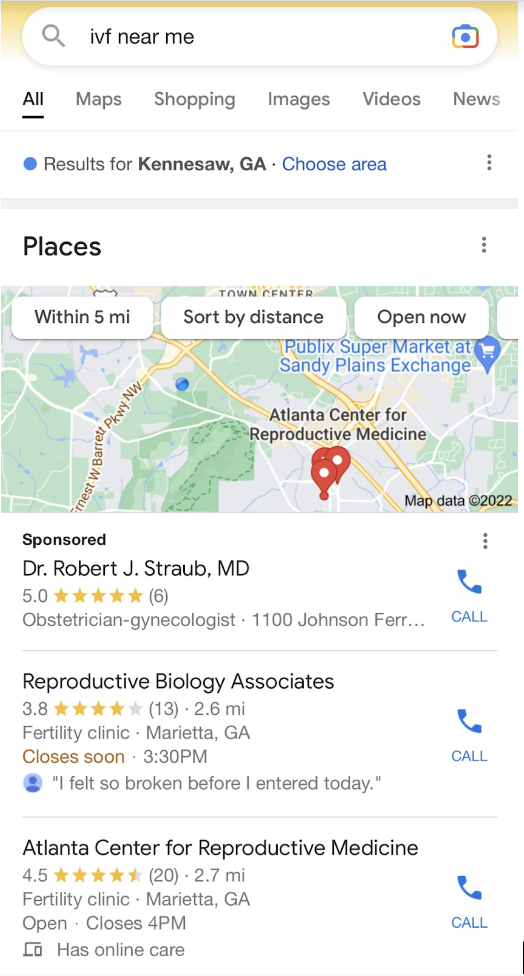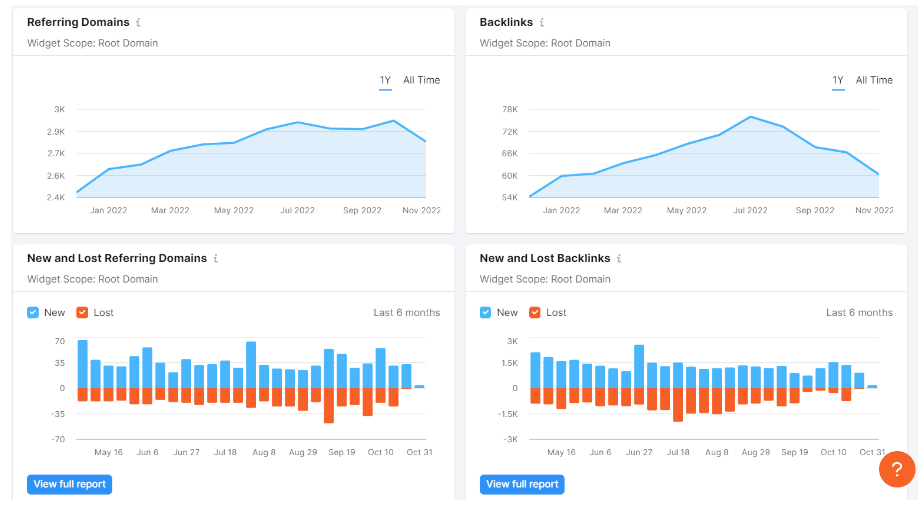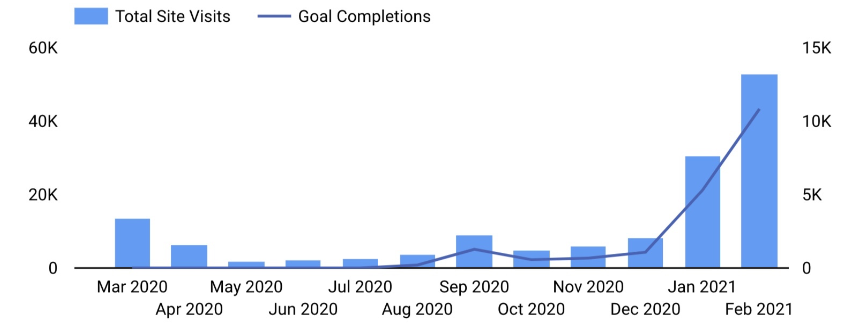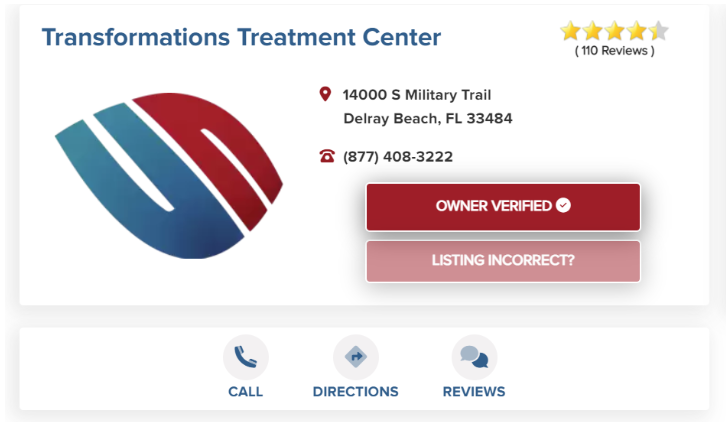A local SEO strategy is pretty much a given for any business with a physical location. That goes double in healthcare. The vast majority of healthcare organizations rely on attracting patients who live and work in their local, geographic areas, and their patients are looking locally of course, too. If you’re in healthcare, then you need to develop a local SEO strategy, because paper maps, Yellow Pages, and the rest of analog navigation are things of the past.
To rank locally with Google, remember “PPR,” which stands for “proximity, prominence, and relevance.” “Proximity” means the physical distance between your practice and the user. “Prominence” means that you want your practice to be well-known with a good reputation. “Relevance” means you should be offering what the user is seeking. These three factors are what drive Google’s algorithm for local search.
So, now the question is: how do you develop a local SEO strategy that meets those fundamental requirements? What do you need to do to get to the top of local searches?
There’s a slew of things you can do to optimize for local SEO, like create content specific to your practices and locations, build inbound links, optimize your title tags, create citations, increase page speed, optimize for mobile, ask for reviews, and so on. However, these search ranking signals are not valued equally by Google. If you’re new to local SEO, it’s best to focus on the signals that will make the biggest impact for your healthcare organization.
Here, we’re going to focus on the top local SEO ranking factors that you as a healthcare marketer need to know and how to optimize for them.
Local Healthcare SEO Factor #1: Organize Your Google Business Profile
We have talked before about Google Business Profile—nowadays known as “Google Business Profile,” or GBP. Yet, it could almost use its own blog. That’s because Google has been rapidly adding features to GBP and giving healthcare marketers more tools to engage with searchers.
All that means one thing—healthcare marketers need to make optimizing GBP listings a top priority. It’s not only influencing rankings but is also often the first thing potential patients see when they enter a search query to find a nearby provider.
Having an accurate address, hours, phone number, and an optimized location landing page is not enough. You must provide more value with FAQs, healthcare attributes, and honest, positive reviews to capture consumers’ attention.
Let’s dive into greater detail.
How it impacts local SEO
In a nutshell, GBP is a listing for your physical location tied in with Google search and Google Maps. It is Google’s primary way of getting information on your practice and a fix on your location. If any patient types in your practice keyword—for example, “IVF”—plus “near me” or the name of their city, the search results will show something like this:

You can see that the three pins on the map are all that seem to matter to Google. The user can scroll down and find the rest, of course, but you really want your healthcare organization to be one of those three pins.
What are the signals you should care about?
First and foremost, you must enter complete and accurate information on your Google Business Profile listing. You must provide the physical address, phone number, category, and attributes of your practice or organization. The name, address, and phone number (NAP) that you enter on your GBP must match your website and be consistent across all web pages and directories on the Internet (we’ll talk about this more in the next section on citations).
Secondary importance is your practice’s hours, your practice services category (maybe “primary” and “secondary” categories), and a practice description. The text should have sufficient keywords so that Google can understand your specialty to the point where it could match the vaguest searches. It’s pretty good at this. Searching for “ankle doctor near me” finds podiatrists.
Remember to keep this information up to date as your healthcare group evolves.
What you can do to optimize?
Goodness, what can’t you do? The following are some great options we recommend:
- Create and verify a listing for each location
- Use a complete USPS-approved address that matches what is on your website
- Specify the area or region that you serve
- Use a consistent naming convention (The EyeCare Specialist vs. EyeCare Specialists)
- Add consistent categories that represent your practice as a whole
- Write a compelling description w/ keywords
- Add a link to schedule an appointment
- Add photos consistently (Feature events, behind the scenes, or your awesome staff)
- Add a virtual tour of your practice Use 360° photos to give potential patients a tour of your practice.
GBP has endless features and tweaks to offer, so you can set up what amounts to a free micro website right there on Google Maps. Chances are the GBP has your healthcare organization’s address entry already, but you have to claim it first so you can customize it and start engaging with searchers. View the manual here. There’s a lot to explore, so take your time.
Local Healthcare SEO Factor #2: Build Links to increase Local Rankings
It’s just as well that we address this seemingly simple concept so often because Google flips around its link-building and PageRank / Site Authority policy at a whim. (We thought PageRank was dead but AHREFs insists PageRank is not dead.)
If you don’t already know, Search engines use inbound links to determine a website’s relevance, and thus ranking. Link building is the process of acquiring hyperlinks from other websites to your own. A hyperlink (usually just called a link) is a way for users to navigate between pages on the Internet. Search engines use links to crawl the web. They will crawl the links between the individual pages on your website, and they will crawl the links between entire websites.

How it impacts local SEO
Link building has a huge impact on performance. We’ve seen it with many of our own healthcare clients. High-quality, authoritative websites linking to your website helps Google decide that your website is good. Links from locally-relevant domains also help. Links act as a vote of confidence. Even without that, inbound links to your site help other web users get to your site anyway.
A great example is LifeStance. With just 39 links per month, LifeStance saw a massive spike in total site visits.

What are the signals you should care about?
So far, the prevailing theory is that inbound links (to your healthcare website) should be of decent quality. A bunch of irrelevant links from spammy sites won’t help you. They need to be from respected sources.
You want a link from a site that is ranked highly or at least passes the sniff test, has quality inbound and outbound links itself, and is semantically relevant to your practice.
What you can do to optimize?
Nothing direct! In fact, any manipulation you try to do, such as offering rewards or money in exchange for links, will be interpreted by Google as a spammy link-building scheme, and then you’ll be docked. But you can create high-quality content and develop strategies to help good linkers find your content.
For our healthcare clients, we recommend the following:
- Awards – Submit entries for relevant awards and recognitions
- Events – Leverage involvement in local groups and showcase events that you’re hosting
- Community Outreach – Community service, charitable giving, and leadership
- Speaking Engagements – Public speaking opportunities
- Media Features – Gain relevant media features in print, digital, radio, podcast, and TV
- Byline Articles – Publish editorials, columns, and research in leading publications
- Contributions – Quote an expert source from leading publications
- Social Media – Integrate with social networks and SEO keywords to increase search rankings and web traffic through link building
Local Healthcare SEO Factor #3: Directory Listings and Citations
Citations and directory listings are really straightforward. They’re essentially a digital reference and most often take the form of a listing in an online business directory. The fundamental components of a citation are a healthcare organization’s name, address, and phone number (NAP).
While citations are not the most important ranking signal, they do help Google sort out your place in the world and help it determine your location. It’s crucial that your practice has citations in relevant local directories and that your NAP is consistent across all citations.

How it impacts local SEO
How will this impact your practice? Claiming and optimizing local business directories expands your online footprint, for one. Search engines such as Google also consider local business directories highly reputable, indicating that your practice is “present” and accountable. The main thing you want is to be accurate, consistent, and widely listed.
What are the signals you should care about?
The places where your NAP data should be listed include your Google Business Profile listing and Facebook Business Page, but also websites like the local chamber of commerce pages, a local business association page, or online directories for your area. Commercial directories like Yelp, the BBB, and Angie’s List are essential for brick-and-mortar businesses.
What you can do to optimize?
Keep it consistent, accurate, and up-to-date. We don’t mean to repeat ourselves here, but it is easy to make a listing and forget you used one phone number in one place and another one somewhere else. You get exactly one of each in NAP, so if you change one listing, you must change them all.
Local Healthcare SEO Factor #4: Reviews
On most of the websites where you would create a listing and add NAP data, patients can leave reviews about your practice. This includes your GBP listing as well. Healthcare consumers must be able to trust their providers, and this is an essential part of reputation management. We’ve put together some detailed tips on getting more positive reviews in healthcare here.

How it impacts local SEO
The relationship between reviews and SEO has long been debated. According to a 2017 study by Moz, reviews contribute 7% of the signals that Google uses to assign a business’s local ranking. In 2019, BrightLocal reports that online reviews are now the second most important factor for Google’s Map Pack rankings. A survey from Whitespark shows that SEO experts’ perceived impact of reviews on the Map Pack has increased in 2020. However, their perceived impact on organic local listings hasn’t changed much.
Even if it’s unclear how much they impact SEO, it’s non-debatable that reviews impact your potential patient’s impression of your practice. If you make it to page one or are one of the three businesses in Google’s Map Pack, you want healthcare consumers to see high-quality positive reviews. If they’re evaluating similar practices, they’re going to pick the one with the best reviews.
What are the signals you should care about?
Obviously, you want to strive for better ratings. But when you get a bad patient review, it’s not the end of the world. Swoop right in there and respond publicly to the rating, apologizing to the unsatisfied patient and offering to make amends. Sites like Yelp and the BBB have features in place to do this.
What you can do to optimize?
Create easy opportunities for patients to rate their experiences. What’s more, encourage patients to rate and review you. Google itself helps with this on its GBP listing. Take your phone with you and visit a local restaurant. You’ll see that Google will later message you with a pop-up asking you to rate the business.
But don’t leave reviews to the whims of your patients. Invest in review solicitation software such as BirdEye or Podium. These solutions offer a variety of ways in which you can encourage and collect reviews. If you collect email addresses or phone numbers during your scheduling, you can send automated emails or texts asking for a review. Just make sure that you’re complying with the listing platform’s policies (and never paying for reviews).
Lastly, add a review CTA to your website. You’ll be surprised just how many of your patients will be willing to chime in, if you give them the opportunity.
Local Healthcare SEO Factor #5: Behavioral Signals
Behavioral signals are the signals sent by healthcare consumers when your search result comes up. Do they click through? How long do they stay on your website? Quick bounces can signal a search engine that you’re not giving searchers what they want. Some of this is not just a matter of your practice’s quality and relevance, it’s a matter of how mobile-friendly you’ve made your site.
Interactions with your Knowledge Graph and GBP listing are also important. Do they look at your photographs? Read your reviews? Do they tap through on mobile to give you a call?
How it impacts local SEO
Google relies on behavioral signals in all SEO, local included. It uses these signals to determine when a site is misbehaving, spam, security-compromised, or is of poor quality. Core Web Vitals is another way Google judges your website’s behavior, entirely based on its performance on mobile devices.
What are the signals you should care about?
Google mainly wants to make sure that this is an open operating practice, and that somebody in the world finds it useful. High engagement is your key strategy here. You want your online presence to be inviting, easy to use, well-behaved on mobile, and up-to-date.
What you can do to optimize?
To start with, you can encourage engagement with a promotional offer from your listing within Google results. On either ad units or GBP listings, you can offer engagement features such as a “call” button that auto-dials your phone from the patient’s phone, an appointment-setting button, links to find out more, and so on.
Building out your GBP listing, as we mentioned earlier, can help you gain the behavioral signals Google seeks. Frequently add photographs to your listings so users can click through them. Encourage more reviews so you give searchers something to read. Answer any questions that searchers ask. The more you invest in your GBP listing, the higher you’ll rank in local searches.
Conclusions
As always, we remind everybody that even though Google seems at times like a demanding headmaster, all it wants is to give healthcare consumers what they want (while they make some money from ads and data). Google’s guidelines for ranking quality healthcare organizations have always been the same kinds of standards you would want to meet for pleasing patients and having a thriving practice anyway.
There are several things you don’t have to worry about when it comes to local SEO. Provided you aren’t running a practice in a crowded metropolis and aren’t in an over-saturated industry, you shouldn’t have much competition for local traffic. This means you don’t have to compete with the entire world for your major industry keywords. You don’t have to focus as much on content marketing to where you’d need a thousand-page blog just to rank. You only have to rank higher than the practices that are your direct competitors in your local neighborhood.
So at least that’s a load off your mind, isn’t it?

